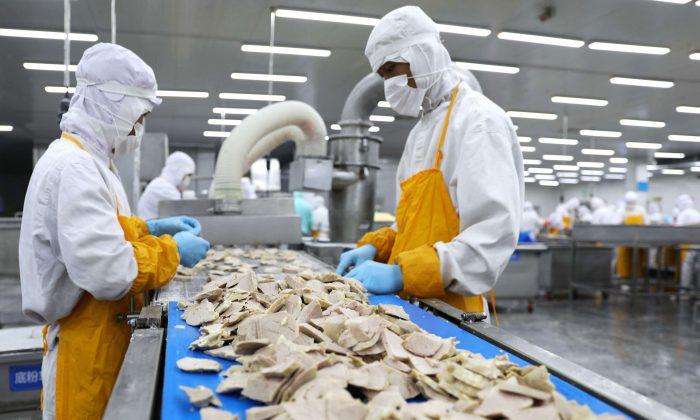BEIJING—China’s manufacturing sector grew at the slowest pace in eight months in July as export orders declined yet again in a sign of a darkening outlook for the economy amid an intensifying trade dispute with the United States.
While it remained above the 50-point mark that separates growth from contraction for the 14th consecutive month, the sub-indexes for output and new orders showed slower growth last month.
That led companies to continue to reduce staff levels, though a decline in inventory was a potentially positive sign.
More worrisome for manufacturers was a reading on new export orders which showed a marked contraction at 48.4—the fourth consecutive month of shrinking orders and the worst slump since June 2016.
The weak trend for export orders comes as both China and the United States remained locked in a bitter trade dispute. On July 6, both nations slapped tit-for-tat tariffs on $34 billion of each other’s goods amid an escalating brawl. The U.S. administration announced additional tariffs on $200 billion worth of goods earlier in July.
China’s June exports growth cooled only slightly from the previous month, and so far there have been few signs of a broad impact from the tariffs on factories, with companies saying a weaker yuan was helping to cushion the impact of duties.
A raft of data for June showed momentum has already started to slacken in the world’s second-biggest economy. The risk to the outlook from the escalating trade frictions has prompted Beijing to switch to a more accommodative fiscal policy in a bid to boost growth in the second half of the year.






Friends Read Free